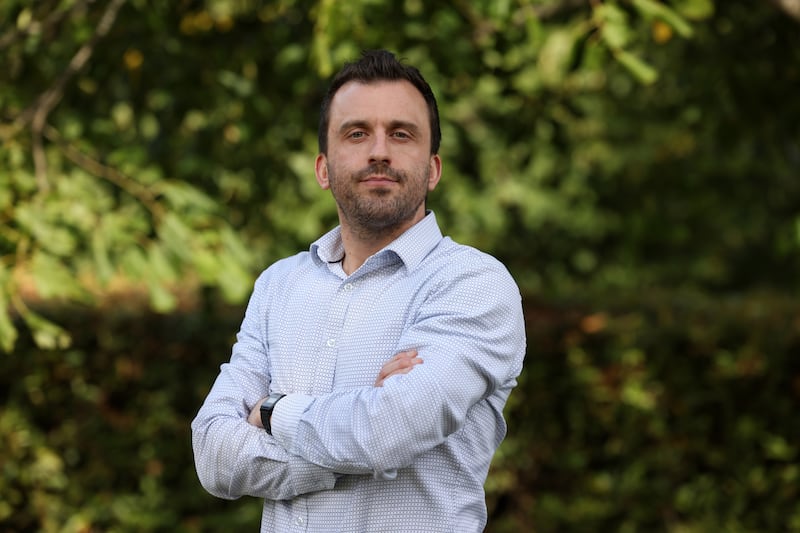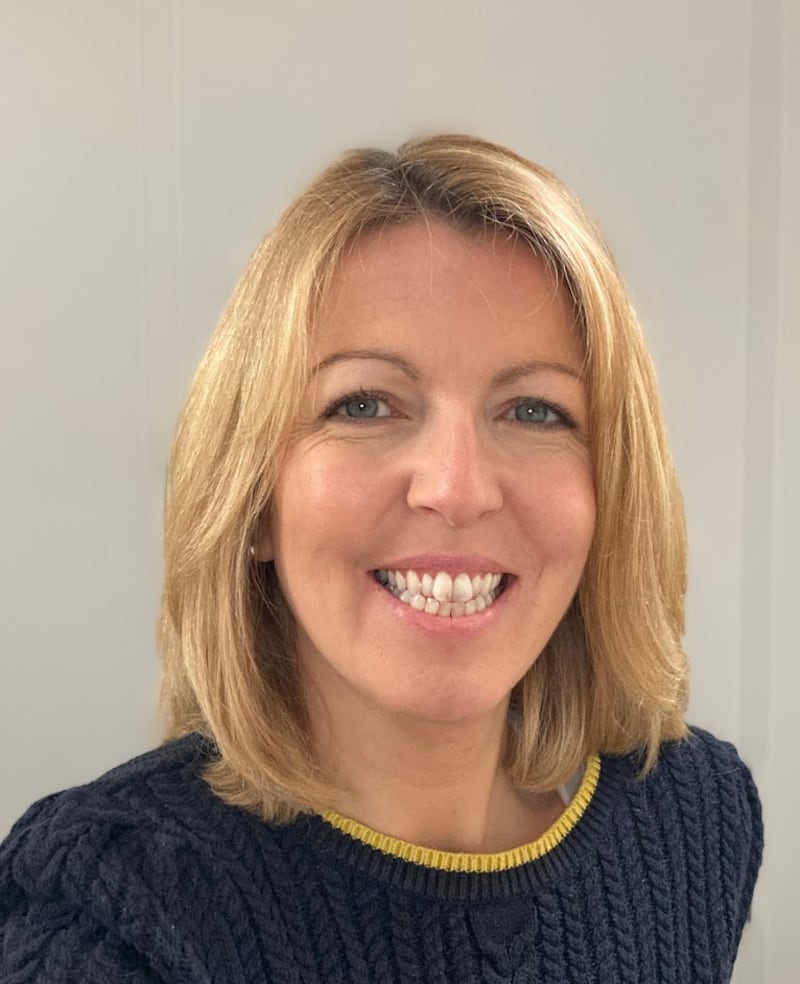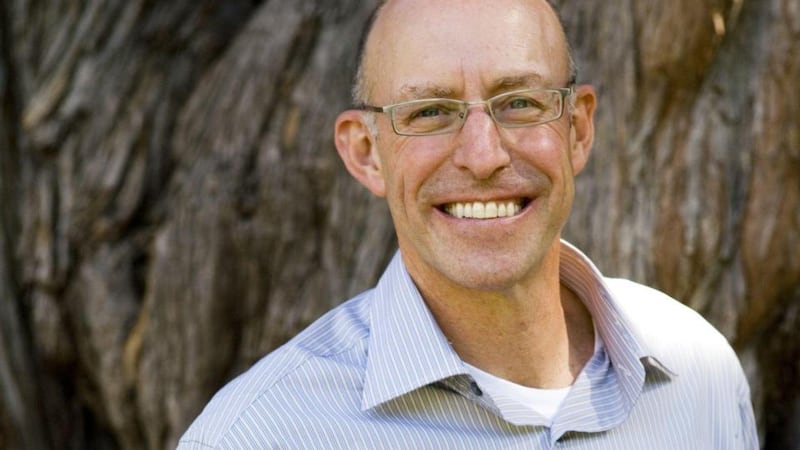Between March 2019 and October 2021, a number of Irish people went to a room in Sheaf House, a HSE community mental health service in Tallaght, where they were given a dose of psilocybin, the psychoactive ingredient in magic mushrooms, and spent six hours with a psychotherapist. They came individually, lay down on a bed wearing eye masks and listened to soothing music and, unlike most people who take this drug recreationally, they did so after several sessions of preparatory therapy.
This was all part of the Compass Pathway Trial, an international study into the use of psychedelic therapy for people with treatment-resistant depression. It involved 233 people in total, a subset of whom were in Ireland. Participants received either a 25mg, 10mg or 1mg dose of psilocybin. Some received a placebo.
The soon-to-be-published results are significant. They show that 37 per cent of participants who received the 25mg dose had a 50 per cent or more decrease in their depressive symptoms. This reduced to 19 per cent for the 10mg group and 18 per cent for the 1mg group. A second, smaller study involved people who remained on SSRI antidepressants and received a 25mg dose. That had a 42 per cent response rate.
“It’s promising data,” says Dr John Kelly, a psychiatrist and clinical senior lecturer at Trinity College Dublin and Tallaght University Hospital and an investigator with the trial. “It’s going to form the basis for further, larger studies.”
Actor Armie Hammer resurfaces as host of celebrity podcast
Heart-stopping Halloween terror: 13 of cinema’s greatest jump scares
Doctor Odyssey’s core message: just imagine Pacey from Dawson’s Creek holding you tight and saying, ‘Shhh, it’s okay’
Conor Niland’s The Racket nominated for William Hill Sports Book of the Year

Psychedelic research has a fascinating and controversial history. Psychoactive plants have long had a role in spiritual rituals around the world. Psychedelics have orbited psychiatry since the Swiss chemist Albert Hofmann first synthesised LSD in 1938, an attempt to create a respiratory and circulatory stimulant, and first ingested it (accidentally) in 1943. This triggered a few decades of research into these drugs for the treatment of psychological disorders. This went a little awry in the 1960s, when psychedelics became associated with the counterculture, and former Harvard psychologists Timothy Leary and Richard Alpert began to see such drugs as more revolutionary than medicinal.

It’s easy to blame people like Leary and Ram Dass for the backlash, and their carelessness and challenging rhetoric… does bear some responsibility for the abrupt turn against psychedelics in the late 1960s
— Author Michael Pollan
Leary began encouraging people to “Turn on, tune in and drop out”. Alpert changed his name to Ram Dass and became a spiritual guru. The writer Ken Kesey gathered a busload of pranksters together and drove around the US encouraging people to drop acid, as recounted in Tom Wolfe’s The Electric Kool-Aid Acid Test. Before long, psychedelic experiences were informing the music of the 1960s – The Grateful Dead (who played at Kesey’s acid tests), The Beatles’ Sergeant Pepper’s Lonely Hearts Club Band, everything by the Doors. It’s unsurprising, really, that in 1971 president Richard Nixon made psychedelic drugs illegal and serious-minded researchers demurred from working with them for decades.
“It’s easy to blame people like Leary and Ram Dass for the backlash, and their carelessness and challenging rhetoric… does bear some responsibility for the abrupt turn against psychedelics in the late 1960s,” says Michael Pollan, author of the best-seller How to Change Your Mind, as well as a Netflix documentary series of the same name.
“But the backlash was also politically driven. Nixon saw the counterculture as his enemy and sought to disrupt it by outlawing LSD and cannabis. The fact is the psychedelics were disruptive and threatening to the powers that be – Nixon may have been right to say LSD was fuelling the anti-war movement and leading young men to refuse to fight in Vietnam – so a reaction was likely to happen.”
After the 1960s, research into the utility of psychedelic drugs went underground and wasn’t exactly peer reviewed. Many health professionals lament those lost decades as a wasted opportunity. “If this work had started properly years ago, we might be further ahead,” says Kelly.
Pollan is quite forgiving of the ad-hoc experimentalists. “The underground was like the monastery during the dark ages, the place where a body of knowledge and practices was nurtured, protected and able to survive at a time when the legal and cultural environment made open work with psychedelics impossible,” he says. “As much as was lost with 30 years of no research, more would have been lost if the underground hadn’t preserved the knowledge of how to use these substances.”
In contrast to these underground experiments, the controls around the Compass trial are rigorous. Psilocybin is illegal in Ireland. The Misuse of Drugs Act classifies it as “Schedule 1″ controlled drug which means it is considered to have a potential for abuse and little medicinal value. To use it even for a trial, requires import licences, storage licences, permission from the Health Product Regulatory Authority, lots of paperwork and Garda checks on the safe in which the drug is kept. The people involved with the study are not countercultural psychonauts like Timothy Leary. Lisa Burke, one of the psychotherapists working on the trial, also works as a counsellor at the National College of Art and Design (NCAD). “I would say the students who come to me would know a lot more about drugs than I do,” she says and laughs.
When a person takes psilocybin, they can feel the whole gamut of emotions – sadness, joy – and that can be a little bit overwhelming if you’re not prepared
— Psychotherapist Lisa Burke
She explains the therapeutic process to me. “Set and setting” are very important, she says. “The ‘set’ refers to the person’s mindset and the ‘setting’ is physically where they take [the drug] and who’s around them. And what we try to do is for the participant to have a very strong bond with the therapist and to feel very safe, because we’ve explored all their fears. We’ve also explored significant life events that they might revisit when they take the psilocybin.”

The trial participants suffer with depression and have tried other therapies that have not worked for them. They need support and reassurance. The bond with the psychotherapist is built up in a series of sessions before they take the psilocybin. “When a person takes psilocybin, they can feel the whole gamut of emotions – sadness, joy – and that can be a little bit overwhelming if you’re not prepared,” she says. “When someone has experienced depression for a very long time, often as a kind of a safety behaviour they avoid difficult feelings or emotions or sensations… One of our pieces of advice is for the person to surrender to what comes up and not to try to avoid.”
On the day the drug is taken, the therapist is there throughout, literally holding the participant’s hand if necessary. “People worry that they’re going to have this huge experience and behave very differently, and oftentimes they can feel that way internally, but on the outside it can just seem like a person is lying down in bed quite peacefully… There’s a point where a person might feel a little bit overwhelmed, and they would reach out for support and might need some reassurance.”
In the days and weeks after, there are a series of “integration” sessions where the psychotherapist helps the participant “to make meaning of what they went through”. The results can vary from person to person and depend on the dosage. It does not work for everyone, but Burke has seen some very positive responses.
What does that look like? “Whereas in a preparation session, they would have shared that they just feel unworthy of living, and not sure why they’re here and don’t feel lovable, now they’re now saying, ‘Gosh, I feel such a connectedness. I feel there’s a reason why I’m here. I deserve to be here. I am part of this earth. I feel a connection to others, to nature, all these really wonderful things.’ Sometimes I’m holding back the tears... They really connect deeply with a kind of a self-love and feeling loved and feeling lovable. I’ve heard people say things like, ‘I forgot that I could feel like this.’ It’s incredibly moving.”
I ask Michael Pollan to describe what he got from his own experiences of taking psilocybin. “I had a couple of powerful experiences on psilocybin,” he says. “One experience of complete ego dissolution changed my relationship to my ego, made me realise, since I survived its dissolution, that I was not identical to it and therefore could choose sometimes to ignore it – a very healthy thing.”

Kelly explains what is happening on a biological level: “There’s a subset of serotonin receptors called serotonin 2A receptors and psychedelics target them and activate them. And they’re spread throughout the brain, but many of them are in the frontal cortex and also in the limbic areas. Downstream of that it looks like it increases plasticity and also changes brain connectivity. And there are different brain circuits involved in this... the default mode network and the executive network and these are altered transiently. It seems like this increases the cognitive flexibility or psychological flexibility and that [gives] potential for new perspectives, new insights, new solutions.”
Lisa Burke sums it up like this: “We all have a lot of defences in how we navigate the world and life, and the volume on those is turned way down [on psilocybin]. When a person is under the influence of psilocybin, they don’t have all those ways of looking at things and ways of filtering our experience and so they’re much more open. They’re just going to feel a lot and experience a lot.”
A lot of people who take psychedelic drugs describe a feeling of connection to the universe that is almost mystical or religious. “That’s a commonly reported experience,” says Kelly. “It’s almost like the boundaries of the self and the environment get temporarily loosened so people can get the sense of connection to the whole and feel part of it. And that sense of connectivity is quite powerful for some people and it can be transformative… I tackle that, not from a spirituality point of view, [but] from a scientific point of view, that you actually are built on layers of molecules, cells, circuits, physiology and you actually are part of the whole thing.”
Pollan agrees: “I don’t see this phenomenon as in tension with science. Spiritual experience is part of the repertoire of human experiences, worthy of scientific study. American researchers say that the best predictor of a successful outcome in psychedelic therapy is whether or not the patient has had a ‘complete’ mystical experience. So the mystical phenomenon is important for science as well as culture.”
I think you need a scientific approach to this to maximise the benefits for the most people… Hopefully, eventually we’ll have a psychedelic therapy programme or clinic within the HSE
— Dr John Kelly, psychiatrist, clinical senior lecturer and investigator with the trial
In recent years it has become fashionable in some circles for people to take psychedelics like Ayahuasca as part of spiritual rituals or to “microdose” with LSD. “There’s no firm scientific evidence whatsoever that microdosing works,” says Kelly. Lisa Burke worries about vulnerable people trying psychedelic drugs without professional support. There is evidence that psychedelic drugs are not good for people prone to psychosis – people who have experienced psychosis or have psychosis in their immediate family were excluded from the Compass trial.
In Kelly’s view, it is important that research remains on a responsible scientific footing. The Compass study, enabled here by the Irish medical research company CRP (Clinical Research Platform), suggests that psychedelic therapy can be useful for some – but not all – people with treatment-resistant depression. How it can be used most optimally is still to be worked out.
“I think you need a scientific approach to this to maximise the benefits for the most people… Hopefully, eventually we’ll have a psychedelic therapy programme or clinic within the HSE... It’s not just treatment for depression. Compass are looking at an anorexia nervosa study and there’s preliminary data that shows some promising effects. We hope to be involved in that. We also have an application to the Health Research Board, we’ve assembled an impressive team... for psilocybin therapy for cocaine addiction.”
Burke is also optimistic about what future research will show, though she recognises that the progress might be slow due to the drug’s legal status. “Which is such a shame. It’s [considered a] dangerous substance with no medicinal or scientific value. That’s what a Schedule 1 drug is. And that’s not true.”





